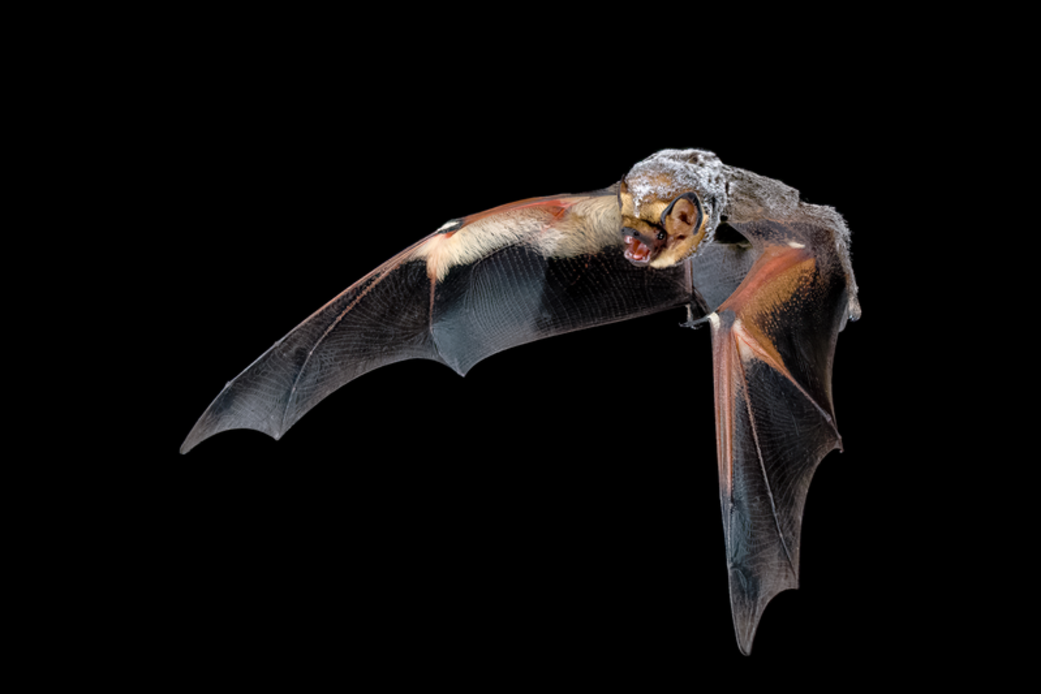Science
Millions of Bats at Risk from Wind Turbines: Smart Sensors to the Rescue

Bats, found on every continent except Antarctica, are facing a significant threat from wind turbines. According to the UN Environment Programme, millions of bats are killed each year globally, with estimates indicating approximately 50,000 deaths in Canada, over 200,000 in Germany, and more than 500,000 in the United States. These fatalities are attributed to the blades of wind turbines, which pose a lethal risk to bat populations already diminished by habitat loss, disease, and pesticide use.
The ecological importance of bats cannot be overstated. As highlighted by Winifred Frick, chief scientist at Bat Conservation International, many bat species play critical roles in pest control, seed dispersion, and crop pollination. For instance, the Mexican long-nosed bat and the lesser long-nosed bat pollinate the agave plant, essential for producing tequila. “If you like your margarita, toast to a bat,” Frick humorously remarks, underscoring the economic significance of these creatures.
Understanding Bat Fatalities
Initial studies suggested that barotrauma, a condition caused by rapid pressure changes near turbine blades, was a primary cause of bat deaths. However, recent findings indicate that direct impacts with turbine blades account for most fatalities. Regardless of the cause, the alarming statistic remains: millions of bats are dying due to wind turbine operations.
Wind energy is crucial for sustainability, providing about 8% of global electricity. Frick emphasizes the need for responsible wind energy practices to prevent further declines in bat populations. Wind farm developers are often required to conduct an Environmental Impact Assessment before installation, which includes evaluating potential effects on local wildlife and habitats. According to a spokesperson for the Global Wind Energy Council (GWEC), areas with significant biodiversity are typically avoided for wind farm locations.
Despite these regulations, enforcement can be inconsistent, leading to a lack of compliance that is “problematic on a global scale,” according to a study. Currently, the most common strategy to protect bats involves a method known as “blanket curtailment.” This technique temporarily pauses turbines during low wind speeds when bats are most active, effectively reducing bat fatalities by over 60% from dusk to dawn between mid-July and mid-October. Nonetheless, this approach can lead to a reduction in energy generation by more than 10% in certain scenarios.
Innovative Solutions for Bat Protection
One promising alternative to blanket curtailment is “smart curtailment.” This approach, developed by Kevin Denman, managing director of EchoSense, employs sensors to detect bat echolocation sounds. When bats are identified nearby, turbines are curtailed, allowing them safe passage while maximizing energy production when bats are absent. A study from 2023, co-funded by the US Department of Energy, reported that smart curtailment could recover roughly 50% of the energy lost under blanket curtailment, with no significant difference in bat fatalities.
Numerous companies are exploring innovative detection systems. For example, Biodiv-Wind, based in France, utilizes infrared cameras for bat detection, while DTBird & DTBat in Spain employs AI technology to identify bat species in real-time based on their calls. Such advancements could allow for selective turbine curtailment, further protecting endangered bat species.
Another method being tested involves using ultrasonic deterrents to dissuade bats from approaching the hazardous rotor-swept area of turbines. Leon Hailstones, marketing vice president at NRG Systems, explains that these systems use speakers to emit ultrasonic sounds, which are inaudible to humans but may disrupt bats’ echolocation. While some studies indicate potential effectiveness, concerns remain that these deterrents could inadvertently increase fatalities among certain bat species due to their natural curiosity.
Frick advocates for a holistic approach to wildlife protection, focusing on the placement and operation of wind turbines to minimize risk. “We want to find ways to maximize energy production while being ecologically responsible and preventing biodiversity loss,” she states.
As the renewable energy sector continues to expand, balancing energy needs with wildlife conservation remains a paramount challenge. The development of smart technologies and innovative strategies offers hope for mitigating the impact of wind turbines on bat populations, ensuring that these vital creatures continue to thrive in their natural habitats.
-

 Lifestyle4 months ago
Lifestyle4 months agoLibraries Challenge Rising E-Book Costs Amid Growing Demand
-

 Sports3 months ago
Sports3 months agoTyreek Hill Responds to Tua Tagovailoa’s Comments on Team Dynamics
-

 Sports3 months ago
Sports3 months agoLiverpool Secures Agreement to Sign Young Striker Will Wright
-

 Lifestyle3 months ago
Lifestyle3 months agoSave Your Split Tomatoes: Expert Tips for Gardeners
-

 Lifestyle3 months ago
Lifestyle3 months agoPrincess Beatrice’s Daughter Athena Joins Siblings at London Parade
-

 World3 months ago
World3 months agoWinter Storms Lash New South Wales with Snow, Flood Risks
-

 Science4 months ago
Science4 months agoTrump Administration Moves to Repeal Key Climate Regulation
-

 Science3 months ago
Science3 months agoSan Francisco Hosts Unique Contest to Identify “Performative Males”
-

 Business4 months ago
Business4 months agoSoFi Technologies Shares Slip 2% Following Insider Stock Sale
-

 Science4 months ago
Science4 months agoNew Tool Reveals Link Between Horse Coat Condition and Parasites
-

 Sports4 months ago
Sports4 months agoElon Musk Sculpture Travels From Utah to Yosemite National Park
-

 Science4 months ago
Science4 months agoNew Study Confirms Humans Transported Stonehenge Bluestones









